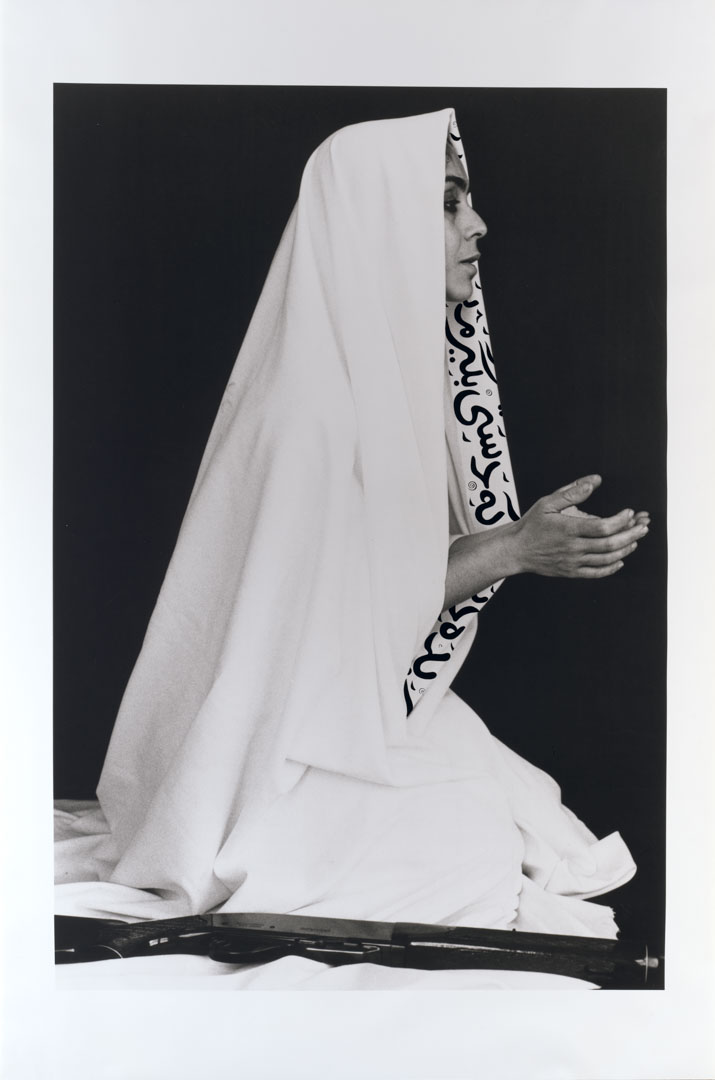We acknowledge the Traditional Owners of the land on which the Queensland Art Gallery | Gallery of Modern Art stands and recognise the creative contribution First Australians make to the art and culture of this country.

Shirin Neshat / Iran/United States b.1957 / Untitled (from the ‘Women of Allah’ series) 1994 / Gelatin silver photograph with calligraphy on paper, ed. 2/3 / 153.4 x 102cm / Purchased 1996 with funds from the Queensland Art Gallery Foundation / Collection: Queensland Art Gallery | Gallery of Modern Art / © Shirin Neshat
Shirin NeshatUntitled (from the ‘Women of Allah’ series) 1994
Not Currently on Display
Shirin Neshat’s ‘Women of Allah’ series comprises her first major body of work, which she produced as a way of coming to terms with the stark social changes in the country of her birth, particularly the submissive role women were required to play in public, symbolised by the veil.
‘Women of Allah’ considers the female warriors of the Islamic Revolution, with the artist taking the role of performer in photographs that pair firearms and parts of her body. Each is inscribed with text in Farsi by contemporary poets who reflect on the nature of revolutionary martyrdom; the elegance of the calligraphy contrasting with the violence implied by the images. Neshat is careful not to assert a particular position in these works and instead offers a sense of conflicting ideological agendas, where women surrender certain rights while willingly fighting and dying for a cause.
The text in this image is an excerpt from a poem by an unknown Iranian poet:
A voice was heard
you, who seeks martyrdom
you my saddened lover
I can’t bear to witness your pain
you, who wishes unity
Heaven’s Gates are now open to you
Shirin Neshat was born in Qazvin in 1957. She left Iran to study in the United States in the early 1970s and did not return until 1990, 11 years after the Islamic Revolution.
Neshat’s return to Iran was pivotal to her thinking about the role of the individual in a particular society, about feminism, and about personal unity with religious belief. She further refined her ideas after exposure to a philosophy thesis written by a friend, Mansour Ehasan, titled Politics of matyrdom in post-revolutionary Iran. This text argues that matyrdom (shahadat) played a crucial role in the political victory of the Islamic forces. Shahadat was embraced with zeal by women as well as men, and Neshat examines in her work the paradox arising from the adoption of the veil as a garment, by women carrying arms in warfare.